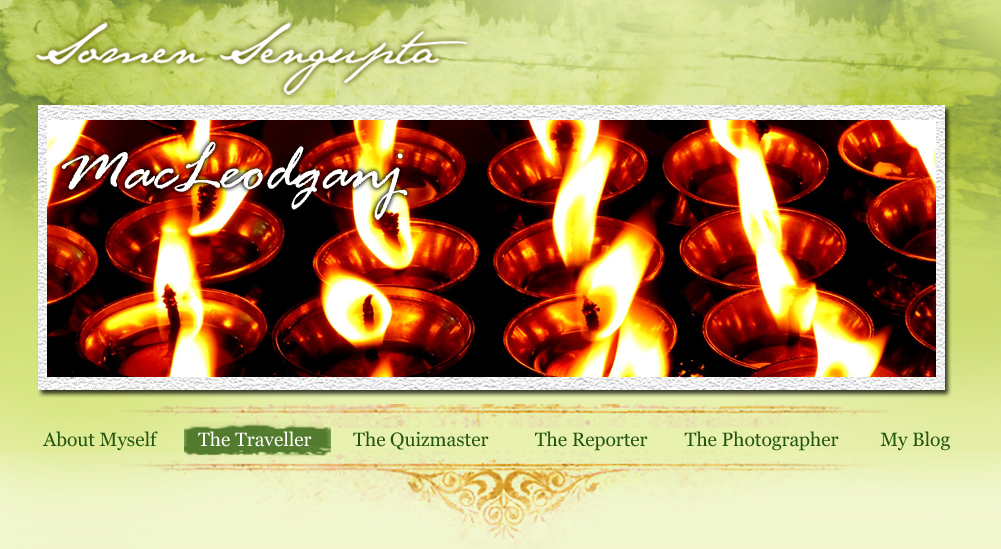| ROMANCING COLONIAL HERITAGE |
|
With memories good and painful, the idyllic hill town Mcleod Ganj stands apart. It has regained its position as the perfect hill retreat and its glory is burning as bright as the flickering flame of Buddhist butter lamps, says Somen Sengupta.
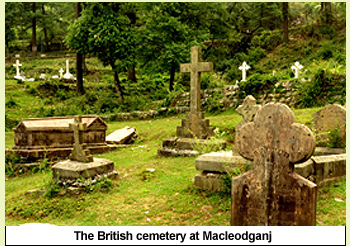 A baby born in Calcutta many years ago still maintains his dominant presence on both sides of undivided Punjab, although he is almost forgotten in the city where he was born in 1810. Sir Donald Friell McLeod, the East India Company’s Lieutenant Governor of Punjab, still has a road named after him in Lahore. The Indian part of Punjab, which was later included in Himachal Pradesh, still has a panoramic hill station named after him on the lap of Himalayas under the shadow of the splendid Dhauladhar range. A baby born in Calcutta many years ago still maintains his dominant presence on both sides of undivided Punjab, although he is almost forgotten in the city where he was born in 1810. Sir Donald Friell McLeod, the East India Company’s Lieutenant Governor of Punjab, still has a road named after him in Lahore. The Indian part of Punjab, which was later included in Himachal Pradesh, still has a panoramic hill station named after him on the lap of Himalayas under the shadow of the splendid Dhauladhar range.
McLeod Ganj, the hill town of Himachal, was once a dream retreat for the European community living in this part of India who found it a fitting replacement for Darjeeling and Shimla, the other two preferred hill stations where our former rulers found their second home.
Though McLeod Ganj was never blessed with huge development such as railways, top class educational institutes and the best of luxury hotels — all that Darjeeling and Shimla got over the years — it was still a piece of little Europe for many who left their homes for this country years ago.
Walking down the memory lane will show us that three historical incidents shaped the growth of McLeod Ganj in the past 165 years. The first was in 1850, just after the second Anglo-Sikh war, after which the East India Company took control of Kangra Valley and a garrison was set up in the upper part of Dharamsala, then a small village.
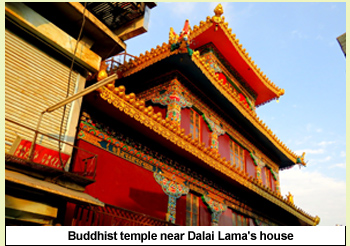 It was the time when Lord Elgin fell in love with the hill town, which boomed with activity. Then came the devastating earthquake of Kangra Valley on April 4, 1904, that left 19,400 people dead and destroyed the entire region. This made the place lose its shine in comparison to Shimla, which became the new favourite destination of Europeans to set up home. After 1947, with India’s Independence, McLeod Ganj almost became a ghost town. It was the time when Lord Elgin fell in love with the hill town, which boomed with activity. Then came the devastating earthquake of Kangra Valley on April 4, 1904, that left 19,400 people dead and destroyed the entire region. This made the place lose its shine in comparison to Shimla, which became the new favourite destination of Europeans to set up home. After 1947, with India’s Independence, McLeod Ganj almost became a ghost town.
It, however, got a new lease of life in 1959 when the 14th Dalai Lama, the spiritual Buddhist leader of Tibet, fled his homeland after a failed armed uprising against the Communist Party of China and took refuge here with a large number of Tibetan aristocrats and common people. Soon, the Tibetan Government in exile was set up here and the city, which was once a peaceful home for many Europeans, became a bustling mini Tibet.
No colonial hill station of India changed its character as drastically as McLeod Ganj did and that is why it is still exceptionally attractive. The radiant touch of the British is still visible in its dilapidated houses, decaying shops, near-destroyed burial ground, and a well-built church.
The romance with McLeod Ganj starts from the city square which was once a picture postcard arena but is now an overcrowded traffic jungle. Here stands a silent solder of time in the form of a fade shop which has been witnessing the people of the place since 1860.
As unbelievable as it may sound, the Nowrojee & Son shop founded in 1860 was once the lifeline of this town because it was the only place that ensured the supply chain of commodities to the European dwellers here. From the best quality wine to chocolate or the latest European matchbox to British newspapers, every single domestic need was met by this shop. It even had its own postal service!
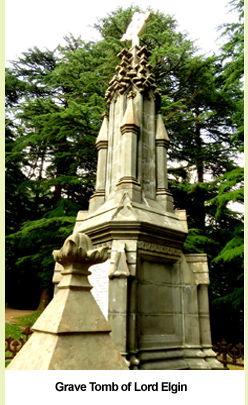 Today the shop is not even a shadow of its past but still bears testimony of a bygone era. It still has old furniture, giant glass jars, cabinets, electrical lampholders and switch boards. The wall is full of publicity materials of petrol, soda water and cigarettes for brands that Europeans used to enjoy. No wonder a glow signboard hanging from the ceiling reads: “The Statesman — the dependable daily”, clearly implying what was the most preferred newspaper of Europeans in that era. Today the shop is not even a shadow of its past but still bears testimony of a bygone era. It still has old furniture, giant glass jars, cabinets, electrical lampholders and switch boards. The wall is full of publicity materials of petrol, soda water and cigarettes for brands that Europeans used to enjoy. No wonder a glow signboard hanging from the ceiling reads: “The Statesman — the dependable daily”, clearly implying what was the most preferred newspaper of Europeans in that era.
Another interesting spot is the St John’s Church built in 1852 to serve British soldiers and their families. A masterpiece of typical European architecture, the church is built of hand-cut local granite stone placed block by block.
The wide range of Dhauladhar Himalaya is visible from its courtyard. Many years ago, this panorama captivated the attention of one man — James Bruce, the eighth Earl of Elgin, who after serving in Canada, Jamaica and China finally landed in India to serve as the Viceroy of the East India Company. He loved the place so much that he sent three deodar saplings from here to his home, Broomhall House near Edinburgh, where they still stand tall.
However, Elgin died in an accident here in 1863 when he fell off his horse. He was buried in the church ground selected by Lady Elgin considering her husband’s affection for this place.
The simple yet beautiful grave of Elgin still stands with a star on its top, with an iron railing encircling it. The grave has a marble tablet with the introduction of Lord Elgin, a man with whom this place will always remain emotionally intertwined. Lady Elgin also donated two Belgian stained glass, which are still seen here.
The bell of the church has its own story. After the earthquake, the church was almost destroyed and its bell tower collapsed, breaking the bell into pieces. Soon a donation drive was started to buy a new bell for the church, and finally in 1915, a new bell arrived but it was too heavy to be installed on the top. So it was placed on the left side of the main gate. After local criminals tried to steal it in 1994, the bell was put under lock and key.
The real magic of a bygone era can be best felt by visiting the burial ground next to the church. Prevailing in utter decay and extreme negligence, the graveyard still has several marble and granite tablets announcing many deaths. Earthquake, epidemics, bear attacks, war and fever took several lives of Europeans who called this town home.
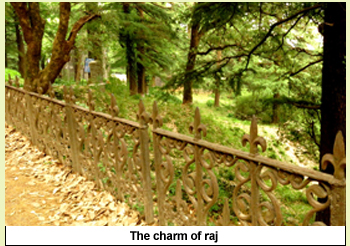 The social scenario of Mcleod Ganj took a dramatic turn from 1959, when the Dalai Lama was given shelter by the Nehru Government. Overnight a small sleepy hill town with a colonial touch got converted into a mini Tibet with a flood of refugees who came with their own language and culture. The social scenario of Mcleod Ganj took a dramatic turn from 1959, when the Dalai Lama was given shelter by the Nehru Government. Overnight a small sleepy hill town with a colonial touch got converted into a mini Tibet with a flood of refugees who came with their own language and culture.
Today it is known as mini Lhasa, the capital of Tibet, and the evidence is palpable in every corner of the town. In some places, there are more Tibetans than Indians on the road. Its shops are full of China-made Buddhist worshiping commodities and its air is heavy with religious chants as well as political slogans. Posters demanding Tibet’s freedom or anti-China sentiments are on the walls, and Tsuglag Khang or the Dalai Lama temple, is the centre of Buddhist religious teaching and as a museum of Tibet’s struggle for independence. The giant Buddha statue faced towards Tibet along with Padmasambhava and Avalokiteshvara will surely blow your mind.
The 11-headed Avalokiteshvara statue has its own history. The original statue was established by King Songtsen Gampo in the seventh century at the central cathedral of Lhasa, only to be destroyed by Chinese soldiers in 1967. Fleeing Tibetans somehow salvaged some bits of the face and sneaked them into Mcleod Ganj via Nepal. Here they reconstructed the replica of the statue in 1970. Inside the complex, there is Kalachakra temple and Namgyalma stupa, a memorial dedicated to those who lost their lives in Tibet.
The centre also runs a well-documented museum vividly describing Tibet’s rich Hindu and Buddhist legacy and its plunder at the hands of China. The Tibetan theatre is often performed here.
Just 14 km from Mcleod Ganj stands the Norbulingka or the jewel park. This is the replica of the last summer palace of the Dalai Lama in Tibet and houses an excellent museum and handicraft centre. The doll museum and the Tibetan national museum are also worth a visit.
The Thangka painting centre, wood carving centre, and metal art craft centre are full of talented Tibetan craftsmen who settled in India over a period of time. Over and above there is a peerless view of the Dhauladhar range, one of the best ranges of the Himalayas. On a clear day, when the snow-capped peaks appear over the horizon and the last beams of the sun rest on the snow, it looks like heaven.
Today with many memories and pain, Mcleod Ganj still stands apart. It has regained its position as the perfect hill retreat and its glory is burning as bright as the flickering flame of Buddhist butter lamps.
Travel Logistics :
. McLeod Ganj is 272 km from Chandigarh and 510 km from New Delhi.
. There's no rail head and you need to travel by car from Pathankot.
. The nearest airport is in Kangra, which is 31 km away.
. There are plenty of hotels;HPTDC hotels offer good value for money.
. You can also cover Kangra fort, Masroor temple ruins,and Bhagsunath temple.
. You can buy a lot of goods,especially Tibetan handicraft items.
This article was published in The Pioneer on 26th June 2016.
Click here to view the original article
|
